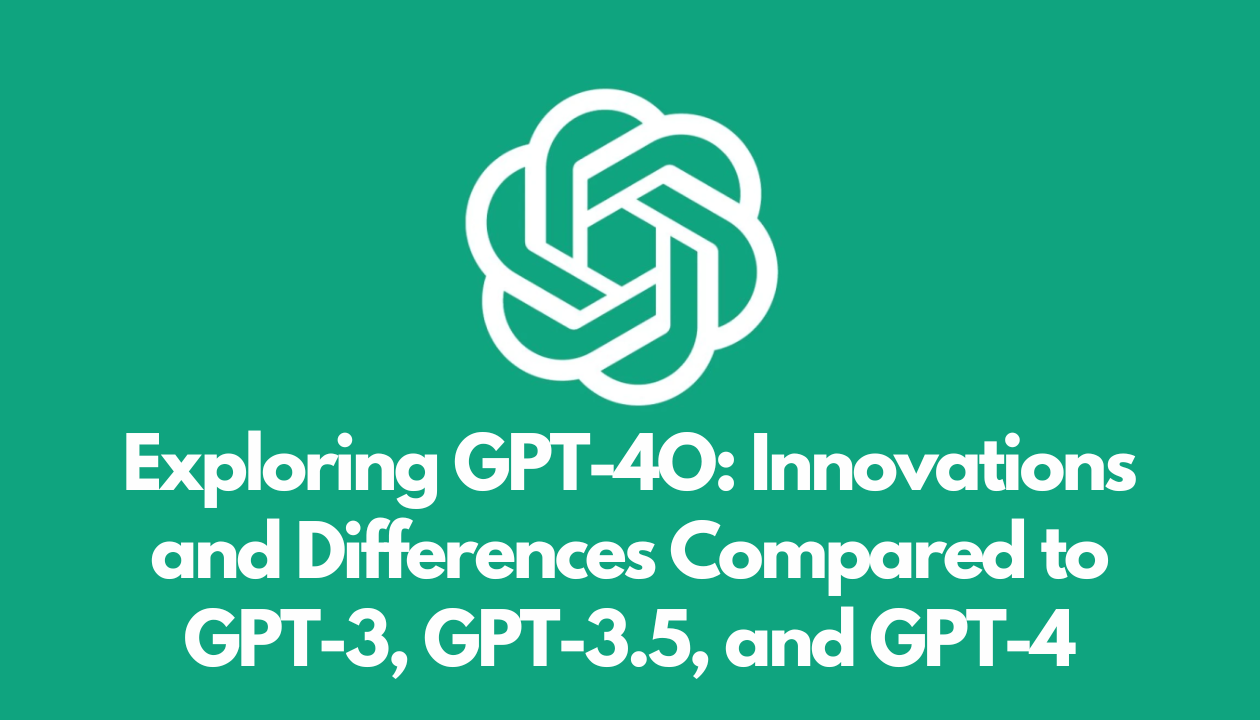
Understanding GPT-4O: Evolution and Distinctions
In the rapidly evolving landscape of artificial intelligence, OpenAI has been at the forefront with its Generative Pre-trained Transformers (GPT) series, each iteration pushing the boundaries of what AI can achieve in natural language processing.
The latest in this lineage, GPT-4O, has garnered significant attention and speculation. This article dives into what GPT-4O entails and how it sets itself apart from its predecessors, namely GPT-3, GPT-3.5, and GPT-4.
The Foundation: Recap of GPT Technology
Before delving into GPT-4O, it’s essential to grasp the foundation laid by its predecessors. GPT-3, released in June 2020, marked a significant leap in AI capabilities. It boasted 175 billion parameters, enabling it to generate remarkably coherent and contextually appropriate text based on prompts provided to it. Its applications ranged from content generation to language translation and even creative writing.
Following GPT-3, OpenAI introduced GPT-3.5, an interim upgrade that fine-tuned some of its capabilities without introducing radical changes in architecture or parameter count. This iteration aimed to improve efficiency and address certain limitations observed in GPT-3.
Introducing GPT-4 and GPT-4O: What’s the Difference?
GPT-4, the direct successor to GPT-3, was anticipated to further enhance AI’s language understanding and generation abilities. However, OpenAI surprised the tech world with the introduction of GPT-4O instead.
The ‘O’ in GPT-4O stands for ‘optimization,’ indicating a specialized variant optimized for specific tasks or operational efficiencies rather than simply increasing parameter size.
Key Differences and Innovations
Parameter Optimization: Unlike GPT-3 and GPT-4, which focused on sheer parameter size to enhance performance across various tasks, GPT-4O emphasizes the optimization of these parameters. This approach allows for improved efficiency and potentially quicker response times, making it suitable for applications requiring real-time interaction or large-scale deployment.
Task-Specific Adaptability: While GPT-3 and GPT-4 are general-purpose models capable of handling a wide array of tasks with varying degrees of proficiency, GPT-4O may excel in specific domains or tasks where optimization plays a crucial role. This could include industries like customer service chatbots, where responsiveness and accuracy are paramount.
Performance Enhancements: GPT-4O is expected to build upon the strengths of its predecessors while mitigating some of the drawbacks observed in earlier versions. This iterative improvement approach aims to deliver more reliable results consistently, thereby increasing trust and usability in practical applications.
Applications and Use Cases
The introduction of GPT-4O opens up new avenues for AI integration across different sectors:
Customer Support: Enhanced optimization could lead to more efficient and accurate responses in customer service interactions, reducing turnaround times and improving customer satisfaction.
Medical Diagnosis: GPT-4O’s optimized parameters might prove beneficial in medical diagnostics, where precision and speed are critical factors in decision-making processes.
Content Creation: From journalism to creative writing, GPT-4O could streamline content generation processes by optimizing the balance between creativity and coherence.
Challenges and Considerations
While GPT-4O promises significant advancements, it’s essential to consider potential challenges:
Ethical Concerns: As AI becomes more capable, ethical considerations regarding data privacy, bias, and misuse become increasingly pertinent.
Technical Integration: Adopting advanced AI models like GPT-4O requires robust technical infrastructure and expertise, posing challenges for smaller enterprises and startups.
Transparency and Accountability: Ensuring transparency in AI decision-making processes and holding developers accountable for model behaviours are crucial for building trust and mitigating risks.
Looking Ahead: Future Prospects
The evolution from GPT-3 to GPT-4O exemplifies OpenAI’s commitment to advancing AI capabilities while addressing practical usability and efficiency. Future iterations may continue to refine these models, potentially bridging the gap between human-like understanding and machine intelligence.
Conclusion
In conclusion, GPT-4O represents a strategic evolution in AI technology, focusing on optimization and task-specific enhancements rather than sheer scale alone. As industries increasingly integrate AI into their operations, understanding the distinctions between GPT-3, GPT-3.5, GPT-4, and GPT-4O becomes crucial for leveraging these technologies effectively.
While challenges remain, the trajectory of AI development promises transformative possibilities across sectors, paving the way for a more connected and intelligent future.
Source link
All Materials on this website/blog are only for Learning & Educational purposes. It is strictly recommended to buy the products from the original owner/publisher of these products. Our intention is not to infringe any copyright policy. If you are the copyright holder of any of the content uploaded on this site and don’t want it to be here. Instead of taking any other action, please contact us. Your complaint would be honored, and the highlighted content will be removed instantly.

